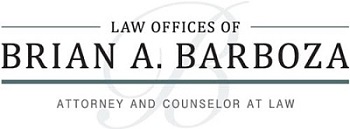CHAPTER 11
CHAPTER 11 FOR RESTAURANTS
Chapter 11 bankruptcy reorganization is a powerful financial tool for Restaurants. Because of
the thin margins for operating restaurants it can be very easy to fall behind on lease payments, vendor
invoices, other accounts payables, payroll, and various taxes. It can get to a point where the owner
begins to contemplate shutting down if things don’t turn around. This is a good indication that a
chapter 11 reorganization may be the action needed to turn around the financial outlook of the business
all the while staying open and continuing to operate.
There are aspects of the restaurant business that are unique in the bankruptcy context. It is
important to create a chapter 11 plan that addresses the unique issues that arise in a restaurant
business chapter 11 case. In addition, a lot of thought and care will be required to determine if how the
business operates from the day to day dining room to the back office needs to be restructured.
Before filing for chapter 11 case the restaurant management, owner, and chapter 11 attorney
should develop an action plan prior to filing the bankruptcy case so the business can exit bankruptcy and
be profitable again. Our office believes that the foundation of success in a chapter 11 bankruptcy case is
predicated upon preparation. Often times the success of the case depends upon the pre-filing planning,
strategy, and development.
CHAPTER 11 FOR BREWERIES AND WINERIES
Chapter 11 bankruptcy reorganizations for breweries and wineries often times are the best
option to continue operating all the while restructuring debt in order to retain employees, keep the
inside sales and the outside sales flowing, and create a positive cash flow moving forward. Licensing
issues, employee and wage issues, tax issues, and other financial issues unique to breweries and
wineries need careful consideration and planning when entering into a bankruptcy case and during the
bankruptcy case.
It is imperative that the chapter 11 plan is structured in a way that addresses all of the brewery’s
or winery’s ongoing liabilities in conjunction with its operations. Keeping the business going in order to
keep its customers happy and its brand intact is imperative. A carefully crafted plan and detailed
disclosure statement is needed to obtain the requisite votes from the company’s creditors to get the
court to approve the chapter 11 plan of reorganization.
A detailed disclosure statement showing the business as a whole laying out its past, present, and
future forecast in order to get the required votes from the company’s creditors will be critical. Special
care needs to be given to this process and should be a collaborative approach between the business
owners, managers, and chapter 11 attorney.
CHAPTER 11 FOR RETAIL BUSINESSES
A retail business which is facing unmanageable debt loads, overly expensive leases, coupled with
seasonal fluctuations in revenue can often times benefit from chapter 11 bankruptcy reorganization.
Immediately upon filing a chapter 11 case an automatic stay goes into place preventing creditors from
taking action to collect from the business. This stay often times gives the retail business a significant
amount of time to catch its proverbial breadth and get back on balance.
A chapter 11 plan will need to be created to reduce the debt, perhaps restructure the lease (or
reject the lease and move to a less costly retail space), and allow the business to continue to operate.
Prior to filing the case a plan of action should be created so the road map through the bankruptcy case
and ultimately exiting the bankruptcy will be foreseeable. This will take collaboration between the
business owner, management, and the chapter 11 attorney.
It can be tough to make the decision to file chapter 11 bankruptcy. However, especially in light
of the current economic times, chapter 11 often times can be the most powerful and affective financial
tool a retail business can use. From a small single retail store to a retail chain bankruptcy can create
financial advantages for the business that otherwise could not be utilized.
